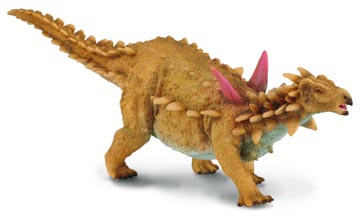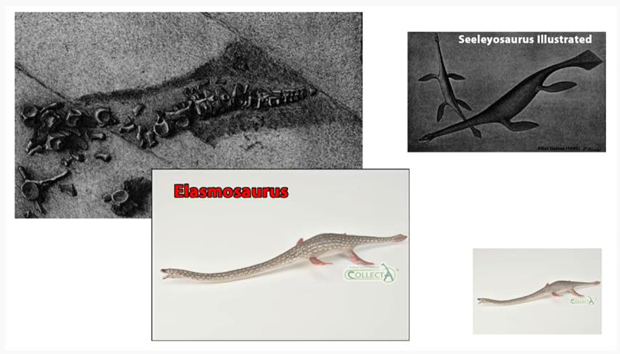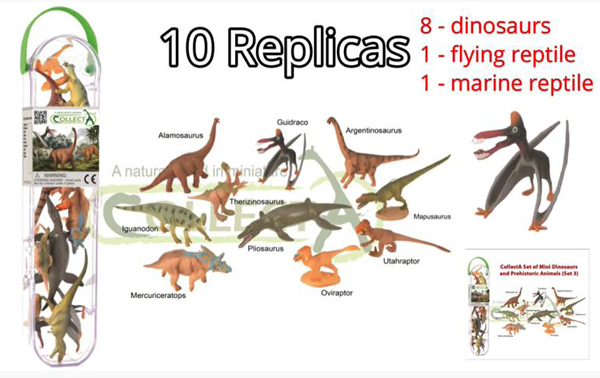First Dinosaur Remains from Ireland
First Dinosaur Remains from Ireland
Scientists from the University of Portsmouth, National Museums of Ireland and Queen’s University Belfast have confirmed that fossils found by the late Roger Byrne on the east coast of County Antrim (Northern Ireland), are dinosaur bones. These are the only dinosaur bones known from the island of Ireland. Roger Byrne donated a number of specimens to Ulster Museum but they had not been closely studied, a scientific paper published in the Proceedings of the Geologists’ Association remedies that and confirms that two of the pieces are dinosaurian and although they were found at the same location, they represent bones from two different dinosaurs.
Lead Researcher Dr Mike Simms Holding the Two Dinosaur Fossil Bones
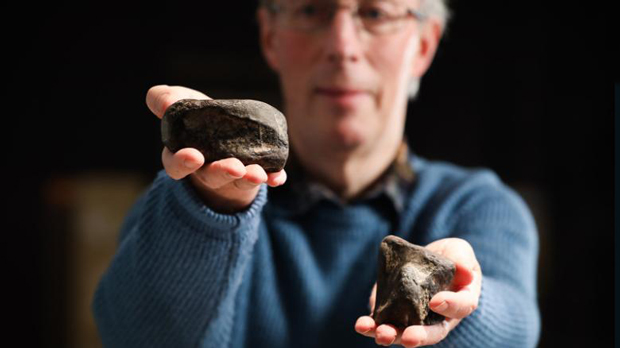
Picture credit: The University of Portsmouth
Dinosaur Bones
Lead author of the research Dr Mike Simms stated:
“This is a hugely significant discovery. The great rarity of such fossils here is because most of Ireland’s rocks are the wrong age for dinosaurs, either too old or too young, making it nearly impossible to confirm dinosaurs existed on these shores. The two dinosaur fossils that Roger Byrne found were perhaps swept out to sea, alive or dead, sinking to the Jurassic seabed where they were buried and fossilised.”
Lias Group Exposures
The two fossil bones found by the Roger Byrne, a schoolteacher and avid fossil collector, come from Lower Jurassic strata exposed in Islandmagee. They had been suspected of representing dinosaur bones, although they were found in marine deposits. A detailed analysis of their histology and shape indicated that two of the pieces that Roger donated were indeed the bones of dinosaurs. Originally, it had been thought that the bones represented a single type of dinosaur but the research team were surprised to discover that they represent bones from two very different types.
One specimen has been interpreted as the proximal end of the left femur of a basal thyreophoran ornithischian. It has been tentatively assigned to Scelidosaurus, a primitive armoured dinosaur, fossils of which are known from Dorset (southern England) and date from the Sinemurian to the Pliensbachian faunal stages of the Early Jurassic. The strata from which the femur fragment was found dates from slightly earlier, both the fossil bones are around 200 million years old.
A Model of the Early Armoured Dinosaur Scelidosaurus
Picture credit: Everything Dinosaur
The picture (above) shows the CollectA Deluxe Scelidosaurus figure.
To view the CollectA Deluxe range of prehistoric animals: CollectA Deluxe Prehistoric Life Models.
Evidence of a Meat-eating Dinosaur
The second fragment of bone has been identified as the proximal part of the left tibia of an indeterminate neotheropod, perhaps a member of the averostran-line similar to Sarcosaurus, or a megalosauroid. Sarcosaurus fossils are associated with Lower Jurassic strata (Hettangian-Sinemurian faunal stages), of England. Together, the two fossil dinosaur bones represent the first dinosaur remains reported anywhere in Ireland and some of the west westerly in Europe.
An Illustration of Sarcosaurus
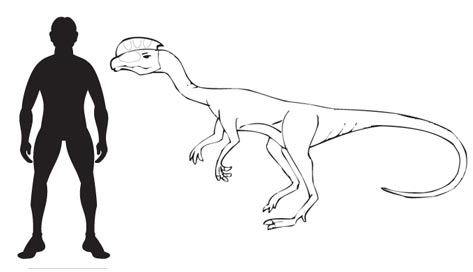
Picture credit: Everything Dinosaur
The researchers used high-resolution, three-dimensional replicas to confirm the identity of the items donated by Roger Byrne.
University of Portsmouth researcher Robert Smyth explained:
“Analysing the shape and internal structure of the bones, we realised that they belonged to two very different animals. One is very dense and robust, typical of an armoured plant-eater. The other is slender, with thin bone walls and characteristics found only in fast-moving two-legged predatory dinosaurs called theropods.”
An Illustration of the Fossil Bones from County Antrim
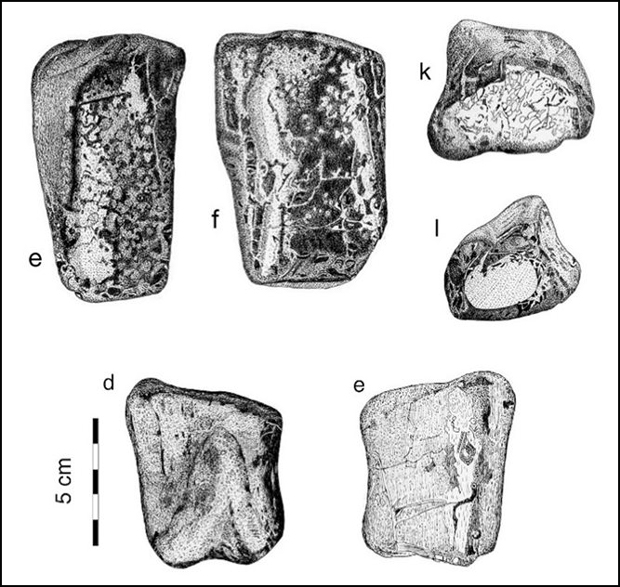
Picture credit: Roger Byrne/National Museums of Ireland
Very Important Fossil Discoveries
Despite their fragmentary and weathered nature, these fossils are extremely important as they date from the Hettangian stage of the Early Jurassic, shortly after the End Triassic extinction event when the Dinosauria start to diversify and become more widespread. Very few dinosaur fossils are known from this stage of the Early Jurassic, so Roger’s fossils are globally significant.
One of the other items donated by Roger Byrne probably represents an element from the skull or jawbone from a large marine reptile, perhaps an ichthyosaur or a pliosaur, whilst a polygonal-shaped piece was determined not to be a fossil at all, but a piece of Palaeocene basalt, similar to that found at the famous Giant’s Causeway on the northern coast of County Antrim.
Scelidosaurus a Beachcomber?
Commenting on the number of Scelidosaurus fossils associated with marine deposits, Professor Martill (University of Portsmouth), suggested:
“Scelidosaurus keeps on turning up in marine strata, and I am beginning to think that it may have been a coastal animal, perhaps even eating seaweed like marine iguanas do today.”
The fossils were on display at the Ulster Museum during the “Dippy on Tour” exhibition in 2018, but it is hoped that these important fossil bones will be able to go on permanent display once the COVID-19 restrictions are lifted.
Everything Dinosaur acknowledges the assistance of a media release from the University of Portsmouth in the compilation of this article.
The scientific paper: “First dinosaur remains from Ireland” by Michael J. Simms, Robert S.H. Smyth, David M. Martill, Patrick C. Collins and Roger Byrne published in the Proceedings of the Geologists’ Association.
Visit the Everything Dinosaur website: Everything Dinosaur.


